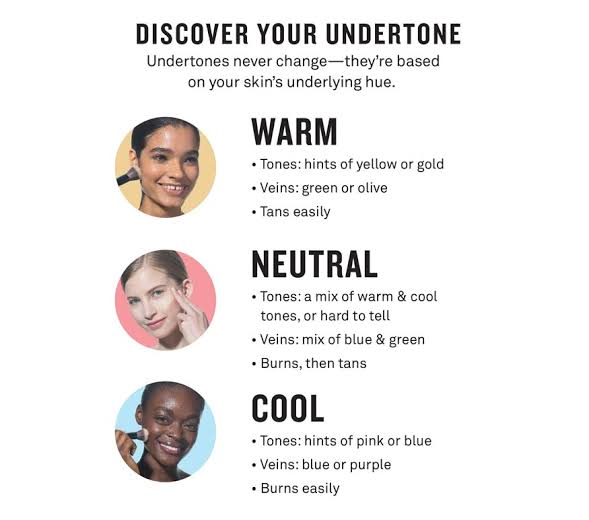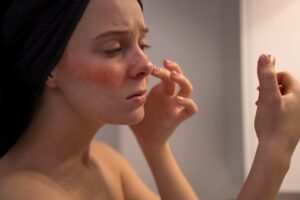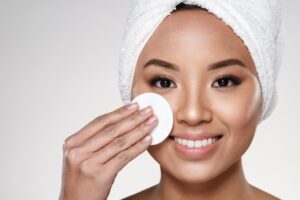Intro
Hi guys, I am back with the concluding part of picking the right foundation.
My sincere apologies for stalling. To ensure I bring you reliable information only, a world of research married with lessons from my personal experience usually go a long way, thus my reason for taking this long.
Have you had make up mishaps in the past? Those ones that get you asking questions such as,
- Why is there a disparity in my face and neck colours?
- Why do I look darker than usual with this face beat ?
- why do I like a clown with white casts in pictures?
These are all questions that stem from an incorrect choice of foundation shade and undertone.
I get it, sometimes it is a struggle picking the perfect foundation match, however, there are some vital tips that could help this avoidable predicament.
Two major factors to consider when choosing the best foundation matches include:
1. Your Skin tone/shade vs the foundation’s shade
2. Your skin undertone vs the foundation undertone
Let’s make quick definitions, shall we?
What do I mean by skin tone and skin undertones. These are tricky concepts, but Ill’d try my best to simplify them.
Your skin tone in other words is your surface skin color while your skin undertone is that subtle hue underneath the surface.
Therefore, your perfect foundation shade is that shade/ intensity that can be seen to blend effortlessly into the surface of your skin.
This is a totally different ball game from your skin undertone. The skin undertone by definition, refers to the color that can be seen to seep out from underneath the surface of your skin. You can also call it the hue of the face beat. Make up usually looks great when the foundation hue matches that of your skin.
Now take a pause to think clearly about this, a foundation could be a perfect shade match and blend seamlessly on your skin surface but fail at matching your skin hue/ undertone.
Most times, if you are not careful, you would make this costly mistake and only notice after the make-up process is complete. This situation is distressing to say the least!
Honestly, it’s not like I am the best or pro at matching foundations. I still struggle a couple of times, but one thing I know is that I get better with every practice.
Tips to help you pick the right foundation
- Most people usually have a different face shade/undertone from their neck. It could pose a huge challenge when matching foundations. There would eventually be a need to decide if matching the foundation to your face or neck would be more pleasing to the eye. This is the current story of my life! My neck is way darker than my face. I know most people would prefer opting for the lighter shade right? Trust me, that decision hardly ever goes well. Matching your foundation shade/ undertone to your neck/chest is your best bet at looking flawless and natural.
- As a sequel to my first point, contrary to the popular jaw line location for matching foundations, I would advise you also do a shade/undertone match on your neck/chest area. Doing this would make you extra sure of the foundation shade and undertone to go with.
- It is important to note that some foundations oxidize minutes after application. By oxidize, I mean that the foundation could darken or turn orange after application. So you have to note this while making your foundation choices. The good news is that not all foundations actually oxidize.
For the sake of our make up beginners, let me say it loud and clear that foundation shades are too versatile to dabble into.
Different brands have tried their best to include people of different races and colours into their product lines.
Infact, new shades are being made by brands every now and then to meet the needs of a particular group of colored people and vice versa.
The brands that have suddenly become the rave of town, and literally taken over the make-up world, weren’t as popular in my country back then.
At the time, Mary Kay seemed like the unbeatable star of the show. I got my blueprint / basic overview for black women from their medium coverage foundation line (which has been discontinued).
They basically had 7 shades for the fairest to the darkest woman of colour , with varying undertones. Find specific shades listed below from the lightest to the darkest shade that was available at the time.
Bronze 500 ( yellow undertone)
Bronze 504 ( pink undertone)
Bronze 507 (golden orange undertone)
Bronze 600 (yellow undertone)
Bronze 607 (golden orange)
Bronze 708 (warm brown)
Bronze 808 (dark brown)
This was my guide to choosing other foundation types. But as the makeup world evolved, and new brands emerged, this blueprint didn’t suffice anymore.
Now, even if most make-up artists are too shy to admit it, we master foundation shades with usage experience and constant use of brands we are familiar with.
I have good news for you though, if you already have a foundation that works well for you shade wise, you could check other brand comparisons on this amazing site for foundation comparison called FINDATION. Find the link attached below.
https://www.findation.com/
Foundation undertones
Foundation Undertone! Miss it, and the whole experience could literally end in tears.
I defined the word Undertone earlier in this post, now it’s time to classify and explain further.
Undertone categories
So that hue I spoke about underneath the skin referred to as an undertone could be classified into four main categories namely.
⁃ Cool Undertones
⁃ Neutral Undertones
⁃ Warm Undertones
⁃ Olive undertones
This undertone concept is better understood using the cooler wheel. With the color wheel, you get introduced to the primary colors and discover how to mix them to get your appropriate shade and undertone.
Also note that a certain color being referred to as cool/warm in an instance, might be relative depending on what you are comparing it with.
Generally speaking , pink and blue hues are referred to as cool, while yellow and golden hues are warm undertones. Red could be either cool or warm depending on what you compare it to. Olive on the other hand is a combination of mostly green and yellow undertones.
Neutral as the name suggests is neither here nor there. It is created by mixing three of the aforementioned colours; red, green and yellow.
So how do you determine your foundation undertone?
Sincerely speaking, it’s by using your eyes and sixth sense, but a few tips that would come in handy can be noted in the diagrams below.


Like I mentioned earlier, mastering the colour wheel would go a long way in grasping the concept of foundation mixing and undertones.
Yes, you heard me! Sometimes to get that perfect shade/ color you need to mix in colors or foundations alike, but on good days, you could get lucky and find the perfect shade/undertone for a particular brand.
Don’t fret, even the best of us still get it wrong sometimes, practice and exploring remains key!
I think I have done justice to this subject matter.
I do hope my post has been useful in some way to you darling. Signing out till later.











